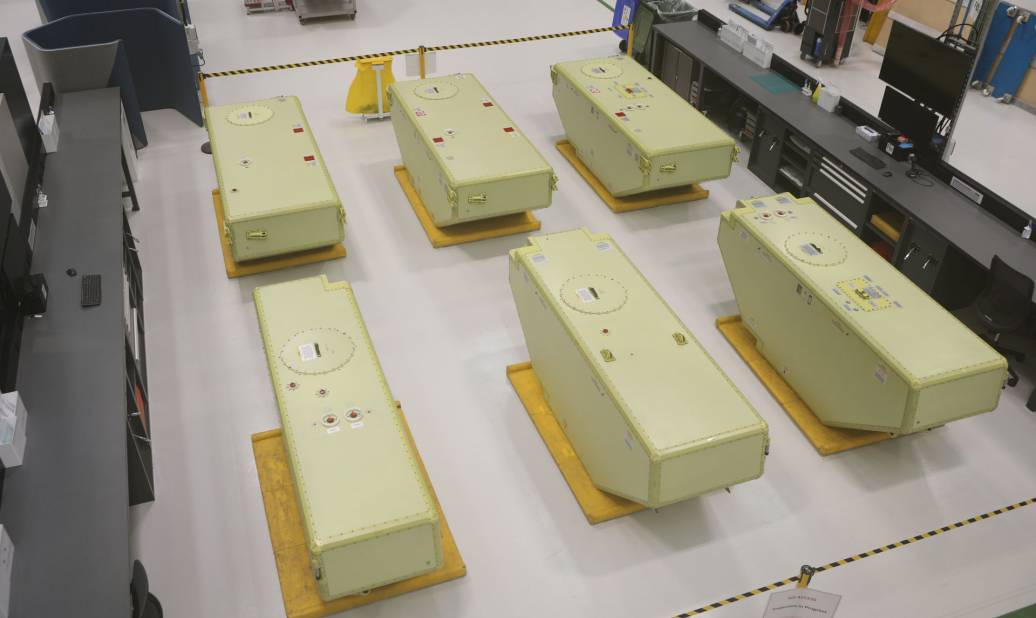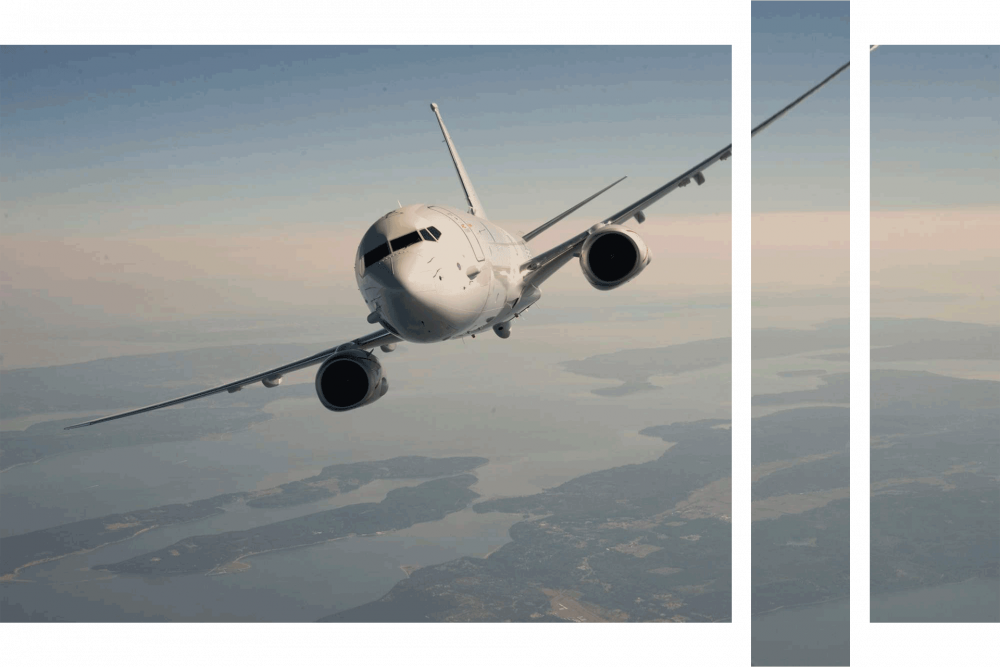


As Boeing’s exclusive supplier of auxiliary fuel tanks for the globally successful P-8 Poseidon maritime patrol aircraft since 2005, Marshall has applied its design, engineering and manufacturing capabilities to deliver a market-leading lightweight fuel system solution.
In 2004, the United States Navy selected Boeing to deliver a new maritime patrol aircraft to succeed the P-3 Orion, which had been in service since the 1960s. The replacement, derived from Boeing’s 737 Next Generation commercial transport, was given the P-8 Poseidon name in 2005.
Among a host of new technologies and capabilities, the P-8 was expected to fly further and spend more hours on station, giving operators additional time to complete lengthy patrol missions over vast expanses of water before returning to base. Maximising the aircraft’s fuel capacity and efficiency was therefore vital, which is why Boeing approached Marshall’s engineering team—a recognised authority on fuel tank design and manufacture.
Marshall already possessed a wealth of experience on Boeing airliner platforms dating back to the 1970s, and between 2000 and 2004 had successfully designed and manufactured fuel tanks for the Boeing 747-400ER, the 777-200LR Worldliner, and the Boeing KC-767 tanker.
In 2005, Boeing tasked Marshall with designing and building lightweight fuel tanks for the new P-8 platform. The tanks would need to meet stringent strength and safety standards, while also leaving as much flexibility as possible for the integration of other critical equipment.
Drawing on its extensive fuel systems knowhow and strong working relationship with Boeing, Marshall designed a lightweight solution comprising “ship sets” of six tanks per aircraft, alongside a number of line-replaceable units (LRUs) and components.
Marshall’s design adopted a proprietary dual-wall aluminium honeycomb structure, offering strength and reliability while also delivering highly competitive weight-to-volume performance. Compared to a conventional bladder solution, Marshall’s design offers a 15% increase in fuel volume while also requiring less frequent maintenance.
“Marshall’s unique fuel tank technology allows the aircraft to fly longer and further, helping to protect seas and secure borders around the world.”
Steve Burnell
Managing Director, Boeing Defence UK
The Marshall team moved from design to testing, certification and manufacturing—and the success story continued.
Ahead of the P-8’s entry into service, Boeing and the U.S. Navy conducted numerous flight tests and other operational assessments in 2009, validating the performance of the platform and, by extension, Marshall’s auxiliary fuel tanks. During the same year, the P-8 programme itself shifted gears, with the Indian Navy becoming the platform’s first international customer.
As fresh demand for the P-8 emerged, Marshall ramped up its own production of auxiliary fuel tanks, investing in new capacity and finding new ways to optimise its production processes. Early in 2014, Marshall delivered its 200th tank, while earning recognition from Boeing for its track record of 100% on-time delivery. Production rates continued to increase, with Marshall hitting the 400 mark in 2016 while maintaining its unbroken on-time delivery streak.
By the time Boeing’s UK leadership team gathered at Marshall’s headquarters in Cambridge to celebrate the production of the 1,000th tank in 2022, the P-8 programme had picked up three additional international customers, including the UK’s Royal Air Force.
In 2023, Marshall opened a opened a state-of-the-art facility dedicated to auxiliary fuel tank production, housing a fully optimised pulse line to support an extraordinarily efficient process running from receipt of parts and box build through to inspection and packaging.
With over 1,200 tanks produced to date, Marshall has now maintained its uninterrupted 100% on-time delivery record for over a decade.
With more than 170 aircraft delivered or in service and over 660,000 flight hours logged, the Boeing P-8 continues to deliver unparalleled performance and reliability, redefining the standards of multi-mission patrol and reconnaissance in every mission it undertakes.
The platform’s fuel efficiency continues to impress operators, whose requirements are amply met by its ability to remain on station for over 4 hours at a range of 1,200+ nautical miles (2,225+ km) from base—further supported by in-air refuelling capability.
As of 2025, end users for the P-8 include the U.S. Navy, the Indian Navy, the U.K.’s Royal Air Force, the Royal Australian Air Force, the Royal Norwegian Air Force, the Royal New Zealand Air Force the Republic of Korea Navy, the Royal Canadian Air Force and the German Navy.
Meanwhile, Marshall’s Advanced Manufacturing Solutions team continues to expand on advanced subsystem assembly capabilities with new materials, future technologies and new applications.
Whether we’re replacing the centre wing box on a C-130J Super Hercules or increasing the operating range of Boeing’s P-8A Poseidon patrol aircraft, capability enhancement is at the core of what Marshall does.
Discover our range extension capabilities

